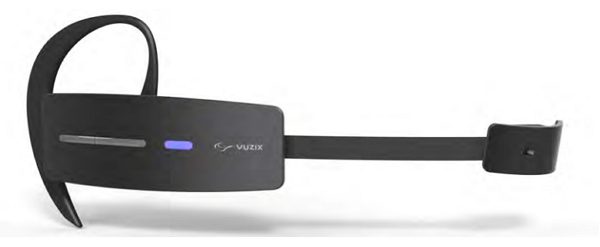Vuzix has just introduced the M100 Smart Glasses. The M100 is an unobtrusive head mounted display, much like Google Glass, which Vuzix hopes will be used as a hands-free smartphone display and for augmented reality applications. In addition to being able to pair wirelessly with Android and iOS devices, the Vuzix M100 HMD is a standalone Android device capable of downloading and running applications of its own. The company plans to release the M100 in 2013.

So far Vuzix has shown off the M100 Smart Glasses as being styled liked a Bluetooth headset with a boom that extends out to the eye. The company says that other mounting options will be available, including “over head” and “behind head”. These may or may not be similar to the ‘Smart Glasses’ prototype that Vuzix recently showed (it isn’t clear whether or not they are the same product, I’ve reached out to Vuzix for comment):

CNET had a look at a non-functional prototype of the M100. The way they describe it makes it sound like the image floats out away from the display, but I don’t know how accurate that is. CNET says that the M100 could launch in the middle of 2013 for less than $500:
M100 Smart Glasses Specs
- 400×240
- Aspect ratio: ~16:9 (1.67:1)
- Field of View: 16 degrees diagonal (13.72 horizontal), equivalent to 4 in. mobile device screen seen at 14 in
- Brightness: >;2000 nits
- 24 bit color
- OMAP4430 processor at 1GHz
- Android ICS
- 1GB RAM
- 4GB flash memory
- GPS
- Micro SD slot
Control Buttons
- Power
- Select
- Volume up
- Volume down
Integrated Head Tracker
- 3 axis Gyro
- 3 axis Accelerometer
- 3 axis Mag/Integrated compass
Battery
- Up to 8 hours hands free
- 2 hours hands free + display
- 1 hour hands free + display + camera
Hands Free
- Ear speaker
- Noise cancelling microphone
Camera
- HD 720p (0.9 MP)
- 16:9 aspect ratio
- Video recording capable
Connectivity
- Micro USB: Control/Power/Upgrade
- Wi-Fi 802.11 b/g/n,
- Bluetooth
Vuzix M100 SDK
The SDK includes software and documentation, access to an exclusive Smart Glasses Developer Portal and an early production M100, hands free monocular display system. The SDK components will be shipped and released in stages. The initial software component will be made available shortly after the SDK becomes available for purchase, followed by the Smart Glasses Developer Portal. Smart Glasses M100, hands free display systems, will be shipped before or near its public release date.








